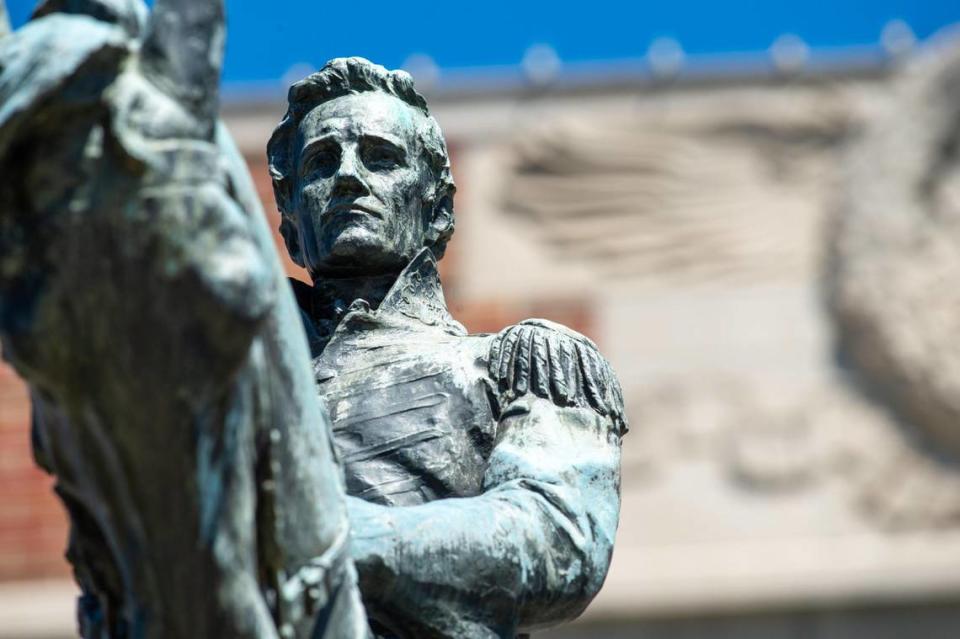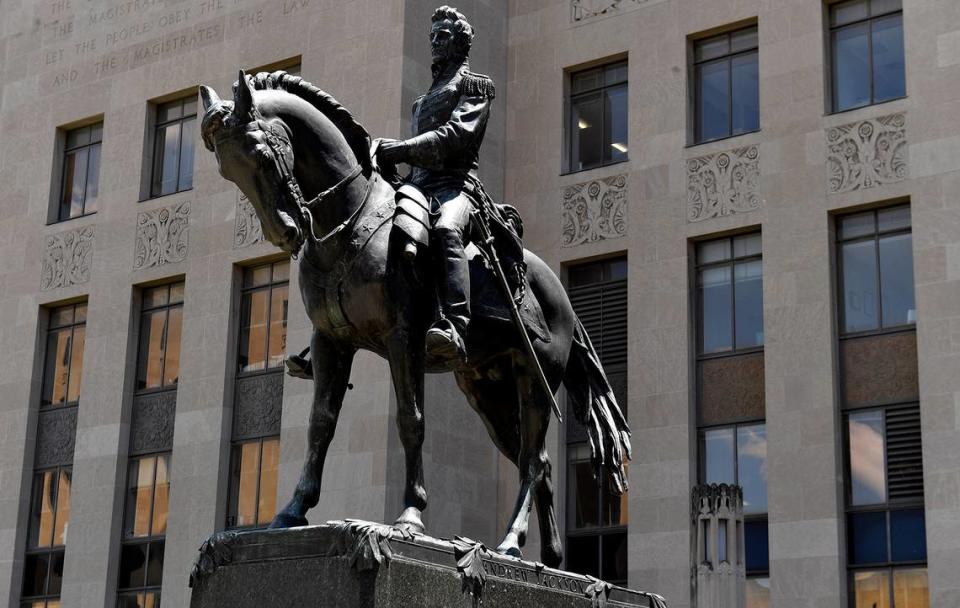History lesson plaque added to downtown Kansas City’s Andrew Jackson statue
- Oops!Something went wrong.Please try again later.
A new plaque has been added to a bronze statue of Andrew Jackson outside the downtown Kansas City courthouse spelling out the former president’s history as a slave owner and his support of forcefully removing Native Americans from their land.
The plaque notes that Jackson County was named for Jackson by Missouri lawmakers three years before he was elected as the nation’s seventh president. It also notes the Trail of Tears and the deaths of thousands of Native Americans during that time.
“Almost two centuries later, we hold a broader, more inclusive view of our nation,” the plaque says. “Jackson’s ownership of slaves and his support for the Indian Removal Act are part of his history.”
The statue has stood outside the north entrance of the courthouse since the building opened in 1934. Addition of Jackson’s backstory comes after likenesses of Jackson have faced high scrutiny in Kansas City and elsewhere.
The statue became a flash point again last summer amid demonstrations for racial justice in Kansas City following the killing of George Floyd at the hands of a Minneapolis policeman. In June 2020, the statue was spray painted with expletives and the words: “Slave Owner.”
Some local lawmakers sought the statue’s removal entirely. Jackson County Executive Frank White, who is Black, last summer led an effort to remove Jackson’s statue from the downtown courthouse plus another one at the Historic Truman Courthouse at the center of Independence Square.
The question was put to the voters in November despite opposition from Black county leaders who wanted to remove the statues with legislation. At the ballot box, 59% of voters favored keeping the monuments.
In 2019, Jackson County Prosecutor Jean Peters Baker proposed installing plaques next to both statues outlining Jackson’s controversial past. She said at the time that context was needed for visitors to the courthouses who walked past the statues.
The Star’s Mike Hendricks and Robert A. Cronkleton contributed to this report.


